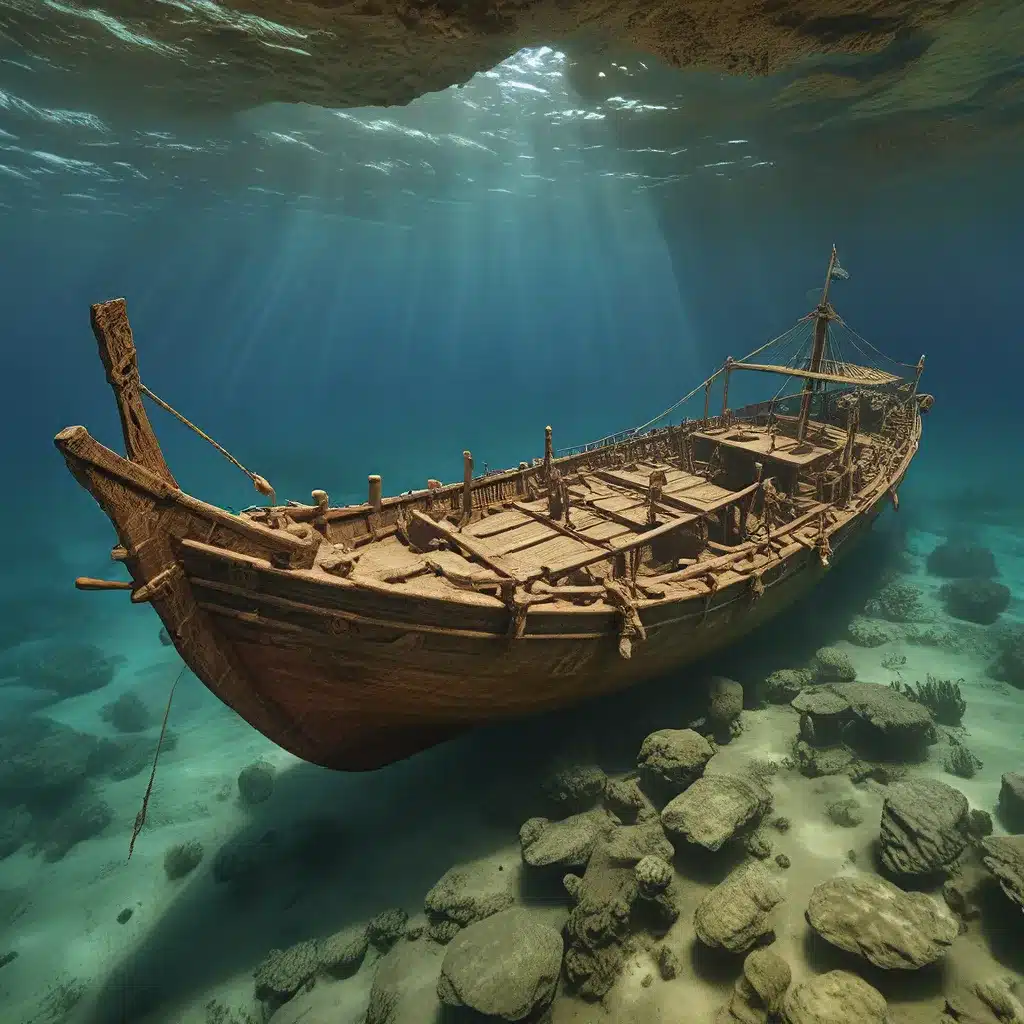
Unlocking the Mysteries of the Antikythera Shipwreck
The vast expanse of the ancient seas has long held the secrets of our ancestors, waiting patiently to be unveiled. One such treasure trove of knowledge lies in the depths of the Aegean Sea, where the famed Antikythera shipwreck has captivated the imaginations of archaeologists and historians alike.
Discovered by sponge divers in 1900, this Roman-era wreck, dating back over 2,000 years, has yielded a plethora of artifacts, including the renowned Antikythera mechanism – considered the world’s oldest analog computer. In recent years, an international team of researchers has embarked on a mission to uncover the deeper secrets of this remarkable archaeological site.
Archaeologists from the Swiss School of Archaeology in Greece (ESAG), along with the Ephorate of Underwater Antiquities of the Hellenic Ministry of Culture and Sports, have been leading the charge in exploring the Antikythera shipwreck. From May 17 to June 20, 2024, the team conducted an extensive expedition, taking advantage of the favorable weather conditions to make significant discoveries.
One of the most remarkable finds was a well-preserved portion of the ship’s hull, complete with its original fasteners and external protective coating. This structural element provides invaluable insights into the ancient shipbuilding techniques employed by the Roman-era mariners. Professor Lorenz E. Baumer of the University of Geneva, a co-director of the project, explained that the hull was constructed using the “shell first” method, where the builders first made the hull with wooden boards and then installed the ribs inside – the opposite of modern shipbuilding techniques.
In addition to the hull, the expedition unearthed approximately 300 objects from the site, including 21 marble fragments, numerous structural elements of the ship’s hull, and over 200 ceramic shards. These finds suggest the presence of multiple statues and provide clues about the wide trade network the ship was a part of, with amphorae from Chios and Rhodes indicating the vessel’s origins in the Eastern Mediterranean and its likely destination in Rome.
The Antikythera Mechanism: An Ancient Analog Computer
One of the most fascinating artifacts recovered from the Antikythera shipwreck is the Antikythera mechanism – a hand-powered device featuring a complex system of interlocking gears. This ancient analog computer was used to predict the movement of astronomical objects, aiding in the planning of important events such as religious rituals and agricultural activities.
The research team employed advanced techniques, including the use of remotely operated vehicles (ROVs) and closed-circuit mixed-gas rebreathers, to explore the shipwreck and document the visible pottery remains. This comprehensive methodology enabled the team to create 3D digital models of the wreck site, providing a detailed record of the archaeological material.
The 2024 expedition also confirmed the presence of a second wooden vessel approximately 650 feet from the main wreck, raising intriguing questions about the circumstances surrounding their sinking. Previous research had hinted at the involvement of multiple ships in this ancient maritime tragedy, and the new findings add weight to this theory.
Unlocking the Secrets of Ancient Maritime Cultures
The Antikythera shipwreck, located 45 to 70 meters below sea level, has been remarkably well-preserved due to its depth. This remarkable state of preservation has allowed researchers to uncover valuable insights into the ancient shipbuilding techniques and the trade networks that connected the ancient world.
As Professor Baumer noted, “With the wooden parts that we found, we hope to find out when exactly and maybe also where it has been built.” This information could shed light on the cultural and economic significance of the Antikythera shipwreck, providing a window into the vibrant maritime activities of the ancient Mediterranean.
The Antikythera expedition is part of a broader research program running from 2021 to 2025, led by the Swiss School of Archaeology in Greece (ESAG). By continuing to explore and analyze the artifacts and structural remains of this remarkable wreck, archaeologists and historians are poised to uncover even more secrets of ancient maritime exploration and the interconnected civilizations that once thrived along the coasts of the Mediterranean.
Exploring the Lost Kingdoms of the Past
The Antikythera shipwreck is just one example of the countless archaeological treasures that lie waiting to be discovered, hidden beneath the waves or buried beneath the earth. From the legendary lost city of Atlantis to the enigmatic Nazca Lines in Peru, the ancient world is brimming with mysteries that continue to captivate our curiosity.
As we delve deeper into the past, unearthing the artifacts and remnants of long-lost civilizations, we gain a better understanding of the rich tapestry of human history. These archaeological discoveries not only satisfy our thirst for knowledge but also inspire us to protect and preserve our shared cultural heritage for generations to come.
The journey of uncovering the secrets of ancient maritime exploration is an ongoing process, fueled by the relentless curiosity and dedication of archaeologists, historians, and adventurers alike. With each new expedition and each groundbreaking find, we inch closer to unraveling the mysteries of the past, unlocking the stories of those who came before us and shaping our understanding of the world we inhabit today.


